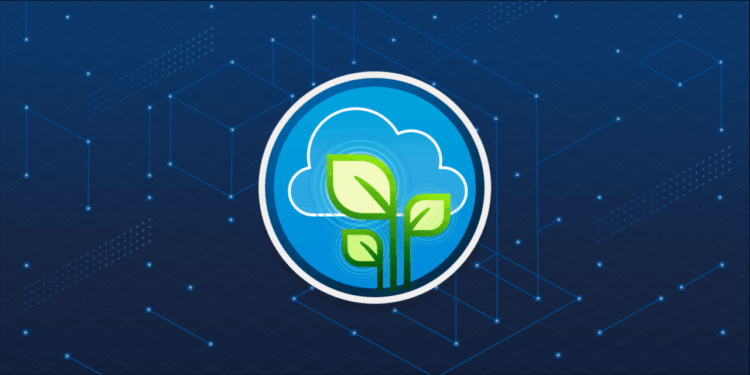The cloud computing revolution has transformed how businesses operate, offering unprecedented scalability and efficiency. However, this digital transformation has come with a growing environmental cost. The massive data centers that power the cloud consume enormous amounts of energy and water, contributing to a significant carbon footprint. As global climate concerns intensify, the demand for greener, more responsible technology has become a strategic imperative. Sustainable Cloud Solutions Emerge is a story of this new movement, a paradigm shift that is reshaping the cloud industry with a focus on environmental, social, and economic responsibility. This article will provide a comprehensive look into the key drivers behind this shift, the innovative technologies and practices that are defining the future of green cloud computing, and the strategic implications for businesses that want to be both profitable and planet-friendly. We will delve into critical areas such as energy efficiency, renewable power, and a circular economy for cloud hardware, offering a deep dive into how sustainability is becoming a core tenet of cloud strategy.
The Environmental Impact of the Cloud
![]()
To understand the importance of sustainable cloud solutions, it’s crucial to grasp the scale of the cloud’s environmental impact. Data centers, the physical infrastructure of the cloud, are one of the world’s largest consumers of electricity. A single data center can consume as much energy as a small city, and their collective footprint is growing exponentially.
A. Energy Consumption: The servers, cooling systems, and networking equipment in a data center run 24/7, consuming vast amounts of electricity. This energy consumption is a major contributor to greenhouse gas emissions, especially when the power is sourced from fossil fuels. As a company’s cloud usage grows, so does its carbon footprint, which is a major concern for businesses with a commitment to sustainability.
B. Water Usage: Data centers also consume a massive amount of water, primarily for their cooling systems. The water is used to cool the servers, which can generate a lot of heat. This water is often sourced from local municipal supplies, which can put a strain on local water resources, especially in areas that are already facing water scarcity. The environmental impact of a data center is not just about its carbon footprint; it’s also about its water footprint.
C. Electronic Waste (E-waste): The hardware in a data center has a limited lifespan. When the servers and other equipment reach the end of their useful life, they become electronic waste, which is a major source of toxic materials and a significant environmental problem. The traditional model of a linear economy, where hardware is “taken, made, and disposed of,” is not sustainable.
D. The Business Imperative for Change: The push for sustainable cloud solutions is not just an ethical one; it is a business imperative.
- Investor Demands: Institutional investors are increasingly using ESG (Environmental, Social, and Governance) criteria to make investment decisions. They are demanding that companies be transparent about their carbon footprint and their commitment to sustainability.
- Customer Expectations: Consumers are more aware than ever of the environmental impact of the products and services they use. They are demanding that the companies they do business with be environmentally responsible.
- Regulatory Scrutiny: Governments and regulators are also placing a greater emphasis on sustainability. New regulations and carbon taxes are on the horizon, which will make it more expensive for companies that have a large carbon footprint.
The New Frontiers of Sustainable Cloud Technology
In response to these challenges, a new generation of sustainable cloud solutions is emerging. These solutions are more energy-efficient, more reliant on renewable energy, and more aligned with the principles of a circular economy.
A. Energy-Efficient Hardware and Data Centers: Cloud providers are investing in new hardware and data center designs that are more energy-efficient.
- Next-Generation Chips: New processors and memory chips are being designed to consume less power.
- Liquid Cooling: Liquid cooling, where servers are submerged in a non-conductive liquid, is a new technology that is far more energy-efficient than traditional air cooling. This can significantly reduce a data center’s energy consumption and its carbon footprint.
- Optimized Data Center Design: Data centers are being designed to be more energy-efficient, with a focus on things like better airflow, more efficient power distribution, and the use of natural cooling (free cooling) where possible.
B. Renewable Energy and Power Purchase Agreements (PPAs): Cloud providers are making a major push to power their data centers with renewable energy, such as solar and wind.
- Power Purchase Agreements: The major cloud providers are signing long-term power purchase agreements (PPAs) with renewable energy companies. These agreements guarantee a long-term supply of renewable energy, which gives the providers a stable price and helps to finance the construction of new renewable energy projects.
- Carbon Offsets: While PPAs are a powerful tool, some providers are also using carbon offsets to offset the emissions from their data centers. A carbon offset is a credit for a reduction in greenhouse gas emissions that is used to offset an emission that occurred elsewhere.
C. A Circular Economy for Cloud Hardware: The traditional linear economy of cloud hardware is being challenged by a new model: a circular economy.
- Refurbishment and Reuse: Cloud providers are implementing new programs to refurbish and reuse the hardware in their data centers. This extends the useful life of the hardware and reduces the amount of electronic waste.
- Sustainable Sourcing: The new push for sustainability is also leading to more sustainable sourcing of hardware. Cloud providers are demanding that their suppliers use sustainable materials and ethical labor practices in the production of their hardware.
D. The Role of Software and AI: The carbon footprint of the cloud is not just about the hardware; it’s also about the software that runs on it.
- Energy-Efficient Code: Developers are learning to write more energy-efficient code. A poorly written application can consume a massive amount of energy, even when it is not being used. The new push for sustainability is leading to a new era of “green software development.”
- AI for Optimization: AI and machine learning are being used to optimize the energy consumption of data centers. An AI system can, for example, analyze a data center’s energy usage and automatically make adjustments to its cooling systems and power distribution to reduce waste.
The Strategic Imperatives for Businesses

For businesses, the push for sustainable cloud solutions is a strategic imperative. Companies that fail to adapt will face a new era of legal, financial, and reputational risk.
A. Choose a Sustainable Cloud Provider: The choice of a cloud provider is a major business decision, and sustainability is becoming a key factor in that decision.
- Public Reporting: The major cloud providers are now publishing their sustainability reports, which detail their carbon footprint, their water usage, and their commitment to renewable energy. Businesses should use these reports to choose a provider that is aligned with their own sustainability goals.
- Certifications: A number of new certifications, such as the Green Business Certification Inc. (GBCI), are emerging to help businesses choose a sustainable cloud provider.
B. Adopt a “Green” Cloud Strategy: The future of cloud computing is a “green” one.
- A Multi-Cloud Strategy: A multi-cloud strategy, where a company uses services from two or more cloud providers, can be a great way to reduce a company’s carbon footprint. For example, a company can use a provider that is powered by renewable energy for its most energy-intensive workloads.
- Cloud Cost Optimization: Cloud cost optimization and sustainability are closely linked. A company that is using its cloud resources efficiently is also a company that is being sustainable. The principles of FinOps (Cloud Financial Operations) are a great way to be both profitable and planet-friendly.
C. The Role of the Cloud Engineer: The role of the cloud engineer is evolving from a technical expert to a strategic partner.
- “Green” Design: The cloud engineer of the future will be a “green” designer who is not just building a high-performing application but is also building a sustainable one. This includes choosing energy-efficient services, using a multi-cloud strategy, and writing energy-efficient code.
- Education and Awareness: A major part of this shift will be the education of cloud engineers on the importance of sustainability and the tools and technologies that they can use to be more environmentally responsible.
D. The Role of Automation and AI: The new era of sustainable cloud computing is being powered by automation and AI.
- Automated Optimization: Automation can be used to automatically shut down idle resources, to move data to a more energy-efficient storage tier, and to optimize the energy consumption of a data center.
- AI-Powered Insights: AI can be used to analyze a company’s cloud usage and to provide a new level of insights into its carbon footprint and its opportunities for sustainability.
E. Prioritize Compliance and Governance: The legal and regulatory landscape of sustainability is constantly changing.
- ESG Reporting: Companies must be prepared to report on their carbon footprint and their commitment to sustainability.
- The “Greenwashing” Risk: A company that makes false or misleading claims about its sustainability can face legal and reputational risk. The new era of sustainable cloud solutions is demanding more transparency and accountability from businesses.
Conclusion
Sustainable Cloud Solutions Emerge is a story of a new era of cloud computing, one that is more responsible, more resilient, and more aligned with the long-term health of our planet. The challenges are immense, from the energy consumption of massive data centers to the electronic waste from a linear economy. However, the opportunity is even greater: to build a more efficient, more innovative, and more equitable digital world. The decisions we make today will not only shape the future of cloud computing but also define our relationship with data, technology, and the very concept of a digital business. The future of cloud computing is here, and it is a new era of green technology, social responsibility, and a deep commitment to building a cloud environment that is designed for the future.








